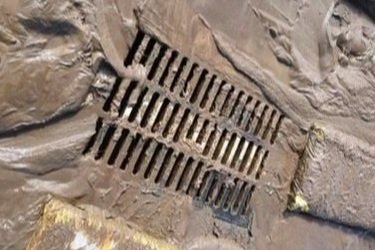Assessing Stormwater Damage: A Guide for Stormwater Ponds Post-Hurricane Helene
Discover essential steps for inspecting stormwater systems and ponds after Hurricane Helene. This guide helps property managers, HOAs, and facility managers assess damage, prevent additional flooding, and restore stormwater functionality.
In the aftermath of Hurricane Helene, commercial property managers, HOAs, and facility managers across North Carolina, South Carolina, Tennessee, Georgia, and Florida are facing the challenge of assessing the condition of their stormwater systems and ponds. Storms of this magnitude can cause significant damage, from blocked inlets and eroded shorelines to compromised water quality. Proper inspection and timely maintenance are crucial to ensuring these systems function effectively and prevent further issues such as flooding or structural failures. This guide provides key steps for evaluating your stormwater devices after a hurricane, helping you identify potential problems before they escalate.
Stormwater Pond Checklist: Post- Hurricane
Inspect water entry and exit points in your pond or stormwater system: These points include risers, inlets, outlets, and spillways. After a hurricane, debris or disrupted vegetation may block these areas. Ensuring water can flow freely through these points is essential to prevent flooding in the pond or other nearby areas
Examine catch basins and storm drains: Hurricanes and major storms can cause catch basins and drains to become clogged with sediment and debris. This sediment can enter pipes through the catch basins, leading to severe blockages. These blockages often result in additional flooding and reduce system functionality
Inspect for displaced riprap: Riprap—large rocks or stone placed along shorelines, spillways, or around inlets and outlets—helps control erosion and stabilize banks. The strong winds and floodwaters from a hurricane can dislodge riprap, reducing its effectiveness in preventing erosion. Check these areas and restore displaced riprap to ensure continued protection and stability around your pond or SCM
Check for accumulated sediment within the pond: Hurricanes and major storms can cause large amounts of sediment to wash into ponds from runoff. Excessive sediment can reduce pond depth, impair water quality, and limit the pond’s ability to manage stormwater. This sediment accumulation can also disrupt the habitat for fish and other wildlife. If a significant buildup is found, consider dredging or sediment removal to restore the pond’s functionality and ecological balance
Look for signs of erosion: Runoff, rain, wave action, winds, and the loss of trees or other vegetation are all factors that contribute to erosion. Hurricanes typically intensify these forces. If the pond is near the coast, it may also be impacted by storm surge, which accelerates erosion. It is critical to address erosion or shoreline restoration promptly to prevent further damage
Assess changes in vegetation: Hurricanes and major storms can damage vegetation through the same forces that contribute to erosion. Native aquatic plants are vital to a healthy, balanced ecosystem and are often required for stormwater ponds or wetlands
Evaluate water quality, particularly salinity levels: In addition to causing erosion, storm surge can affect water quality by increasing salinity in freshwater ponds or lakes. Elevated salinity levels can harm freshwater fish and plants. Conducting a water quality test is recommended to determine if salinity has been affected
Monitor bacteria levels due to runoff: Stormwater ponds are designed to filter runoff, preventing pollutants from reaching other bodies of water. However, recreational, farm, and aesthetic ponds are not usually designed for this purpose. Runoff from hurricane flooding may carry additional bacteria, which can impact both stormwater and non-stormwater ponds. This bacteria can be harmful to humans, wildlife, and vegetation, so people and pets should avoid contaminated water
Look for changes in wildlife: Fish in stocked lakes or ponds may be displaced by floodwaters. Additionally, flooding can introduce undesirable or invasive species into the pond. Stocking and maintaining the appropriate species can help restore balance to the ecosystem
Restoring Stormwater Infrastructure for Long-Term Stability
Hurricane Helene has left many stormwater systems and ponds vulnerable to issues such as erosion, sediment accumulation, and water quality degradation. By following these steps to inspect your property’s stormwater infrastructure, you can address potential problems early before issues worsen, and ensure continued protection against future storms. However, some situations may require professional intervention. If you discover damage that needs expert assessment or repair, Dragonfly Pond Works is here to help. Our team specializes in stormwater inspection, maintenance, repair, and restoration, ensuring your property remains safe and compliant with regulations. Don’t hesitate to contact us for assistance in safeguarding your stormwater systems.
Subscribe to our newsletter to receive informative and engaging news delivered right to your inbox.
Find us on Facebook, Twitter, Instagram, and LinkedIn for news, events, and more.
Dragonfly Pond Works provides specialized pond and stormwater management, compliance repairs, maintenance, and more in Greenville, Spartanburg, Columbia, Charleston, Myrtle Beach, South Carolina, Raleigh, Durham, Charlotte, Greensboro, and Wilmington, North Carolina, Tampa, Sarasota, Naples, Fort Myers, Florida, Atlanta, Athens, Georgia, DC Metro, Alexandria, Arlington, Northern Virginia, and Rockville, Gaithersburg, and surrounding Maryland.


